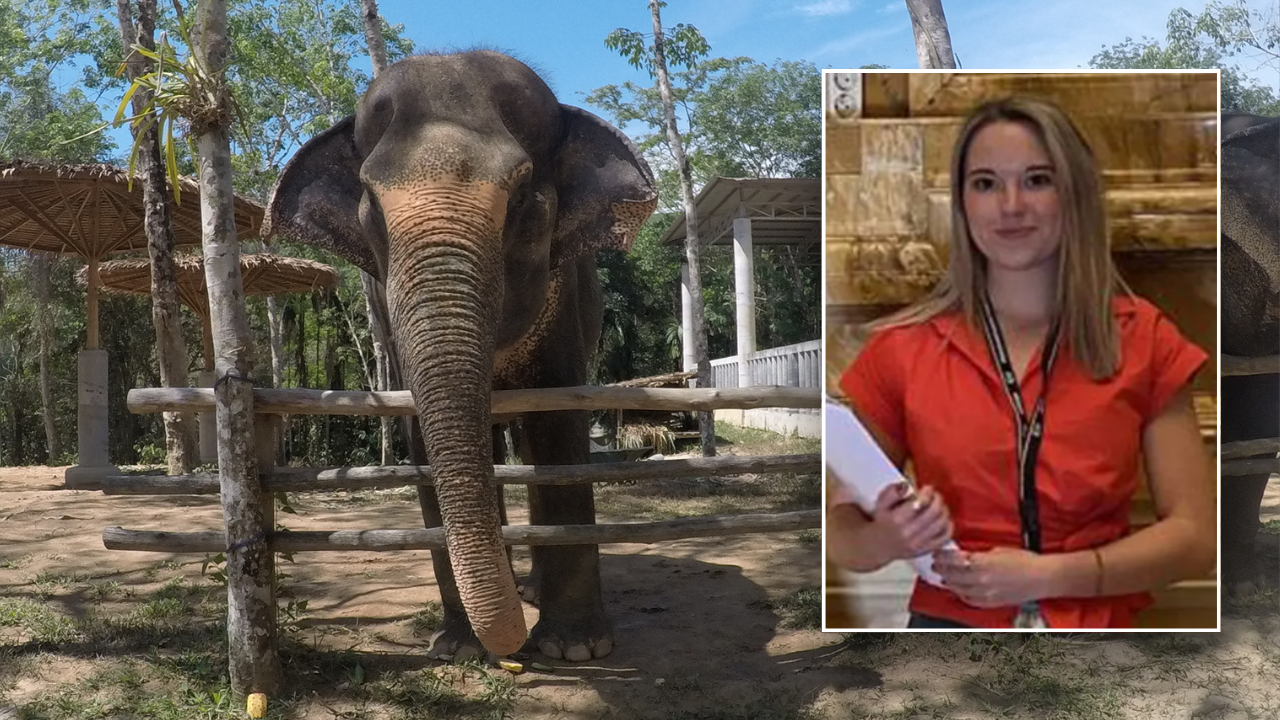Expert Sounds Alarm on Safety of Elephant Sanctuaries Following Tragic Incident
An expert on Asian elephants is sounding the alarm about “elephant sanctuaries” after a tourist was killed while visiting one in Thailand.
Blanca Ojanguren García, 22, a law student at the University of Navarra, died last week. She was bathing an elephant named Phang Somboon at Koh Yao Elephant Care when the 45-year-old animal killed her, according to Spanish media.
Around 18 people were at the sanctuary at the time, including the victim’s boyfriend. Thankfully, no other visitors were injured. However, Phang Somboon’s handler faces serious repercussions, having been arrested for negligence per Thai authorities. Understandably, the incident raises urgent questions about the real-world safety of elephant sanctuaries, which often promote intimate encounters with these majestic creatures.
Pondering the Implications of This Tragedy
According to animal rights advocate, McNair, many sanctuaries in Thailand and beyond fail to live up to their ethical promises. “Sanctuary,” he argues, is often a misleading term. In reality, many establishments operate solely for profit, disregarding the welfare of the elephants. This highlights a painful irony: tourists seeking to foster emotional connections with these creatures might unknowingly participate in their exploitation.
Why did Phang Somboon respond violently? The timing and nature of such incidents can be multi-faceted. McNair suggests that elephants, although perceived as gentle giants, possess immense strength and a capacity for unpredictability when subjected to stress. The tranquility exhibited by captive elephants can’t be mistaken for true tameness; rather, it can be a facade cloaked in fear.

The Complex Reality of Captive Elephants
McNair elaborates on the intricate functions of an elephant’s trunk, characterizing it as a sensitive tool rather than a weapon. This nuanced understanding creates a stark juxtaposition against the backdrop of captivity. Stressful living conditions often lead to unpredictable behavior, pushing animals to react defensively when their boundaries are crossed, even unintentionally.
Small wonder then that the encounter unfolded tragically. Elephants carry memories of their past traumas, and this chaos compounds in unfamiliar environments, especially near untrained individuals. The risk increases when an elephant—battered by abandonment and abuse—is placed in close quarters with someone lacking the foundational knowledge required to ensure both their and the elephant’s safety. It’s easy to overlook the fragility of such peace amid exuberant holiday photos.

A Call for Awareness and Ethical Tourism
McNair reminds us that the roots of these issues often extend far beyond tourist interactions. Starting from their capture, elephants endure severe trauma, which starkly contrasts with the serene images promoted by travel companies. In short, what’s presented as an adventure can often be an exploitation that leaves lasting scars on both animals and humans alike.
Through organizations such as Save the Asian Elephants, efforts are underway to advocate for humane treatment as well as legislative action. Earlier this year, the British Parliament passed the Animals (Low-Welfare Activities Abroad) Act, a significant step aimed at curbing immoral practices that relate to animal tourism. These advancements shine a hopeful light on a troubling industry.
The plight of elephants calls for conscientiousness among tourists. Not all sanctuaries treat animals with the respect they deserve. Hence, thorough research is vital before booking a visit. McNair and fellow advocates encourage travelers to seek establishments where ethical treatment is prioritized, thereby fostering a sustainable tourism model that embraces compassion.
“Our aim is to shift the perception of animal tourism,” McNair articulates. “It’s possible to respect wildlife while allowing people to experience meaningful interactions with these remarkable animals.” Though not foolproof, cultivating awareness provides a path toward a more humane relationship between humans and the wildlife they admire.
In highlighting these issues, we are reminded not just of the importance of ethical tourism, but also of the profound impact each decision can hold—humans and elephants share this planet, and it is only through empathy, understanding, and respect that coexistence becomes feasible.




































